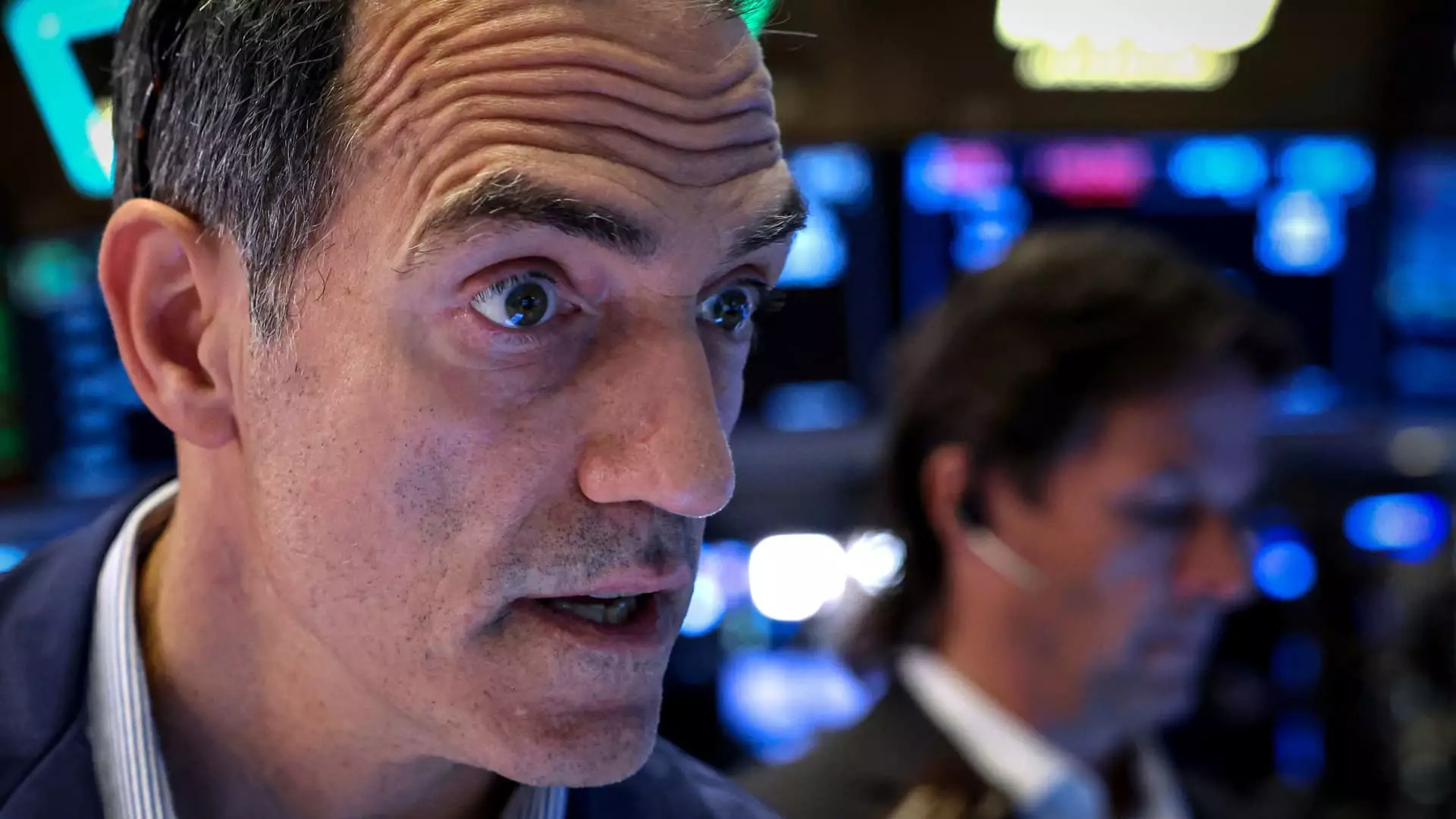Nvidia shares underwent a significant swing during Wednesday’s trading session, fluctuating by approximately $10 from the day’s lowest point to the highest. The stock managed to close the day with an impressive 8% gain. This drastic uptick came as a result of CEO Jensen Huang’s statements at the Communacopia conference, where he expressed the robust demand for Nvidia’s key Blackwell chip and alleviated concerns regarding production delays or slowdowns. Huang’s optimistic outlook resonated positively with investors, resulting in a surge in the stock price. However, despite this rebound, Nvidia still remains 17% below its peak on June 20th but has seen a remarkable 136% rise in 2024.
Wednesday witnessed a remarkable turnaround in the stock market, with the S&P 500 experiencing a substantial 154-point swing from morning lows to afternoon highs. CNBC’s Mike Santoli attributed this resurgence to the increase in bond yields during the day. As bond yields have recently been on the rise, the stock market has exhibited a negative correlation, with stocks falling as yields climb. The swift retreat of bond yields over the past few months had instilled concerns among investors, leading to apprehensions about the overall economic outlook and dampening stock market sentiment. However, Wednesday’s spike in yields, particularly evident in the late morning, injected fresh optimism among stock investors, driving the market upwards.
Over the last three months, certain sectors have outperformed others, particularly rate-sensitive industries like real estate, which has witnessed an 18% surge during this period. Similarly, utilities and financial sectors have experienced positive growth of approximately 10% and 8.6%, respectively. On the other hand, energy and communication services have been the weakest performers, recording declines of 6% and 5%, respectively. These fluctuating sectoral trends underscore the dynamic nature of the stock market and the significance of monitoring specific industry performances.
Insurance Sector Analysis
A significant drop in insurance stocks on Wednesday, notably Travelers, Hartford Financial, W.R. Berkley, and Aon, raised concerns among investors. CNBC TV’s Contessa Brewer highlighted the potential impact of Vice President Kamala Harris’ election victory on the insurance sector, with investors apprehensive about potential legal challenges and decreased regulatory protections for businesses. However, despite these short-term fluctuations, the insurance sector has shown strength in recent months, with companies like Progressive, Aon, Hanover Insurance, and Hartford Financial exhibiting positive growth varying between 14.7% to 20%.
Cocoa prices surged by over 6% on Wednesday, propelled by ongoing discussions between regulators in Ghana and Ivory Coast regarding increased payments to cocoa farmers. This uptick in cocoa prices highlighted the interplay between commodity markets, regulatory decisions, and investor sentiment. Conversely, Hershey’s stock experienced a decline of more than 2%, underscoring the nuanced relationship between commodity prices and industry-specific stock performances.
Shares of solar energy companies like First Solar, Canadian Solar, Sunrun, and SolarEdge witnessed significant gains during Wednesday’s trading session, fueled by positive market sentiment and the anticipation of a potential election win by Vice President Harris. This optimism boded well for the green energy sector, boosting investor confidence and driving up stock prices. The market dynamics surrounding the renewable energy industry reflect both policy-driven and market-led factors influencing stock performance.
As the supermarket giant Kroger prepares to release its earnings report on Thursday morning, investors are closely monitoring the potential impact of its proposed merger with Albertsons. Despite CEO Rodney McMullen’s optimistic projections of cost savings for customers through the merger, regulatory challenges from the Federal Trade Commission have cast uncertainties over the deal’s approval. Additionally, Boeing is facing a challenging market environment, with the stock down 7% in September, highlighting the ongoing volatility in the aerospace industry.
Wednesday’s stock market movements underscore the intricate interplay of macroeconomic factors, sectoral dynamics, regulatory challenges, and investor sentiment. As market participants navigate through this complex landscape, it is imperative to adopt a nuanced and holistic approach towards analyzing stock performances and industry trends to make informed investment decisions.

